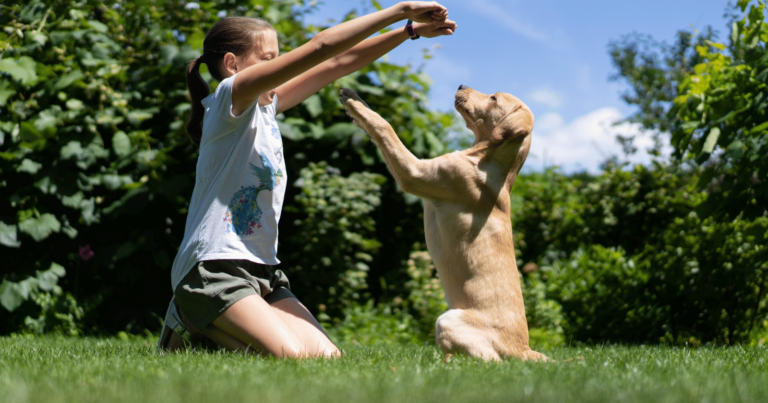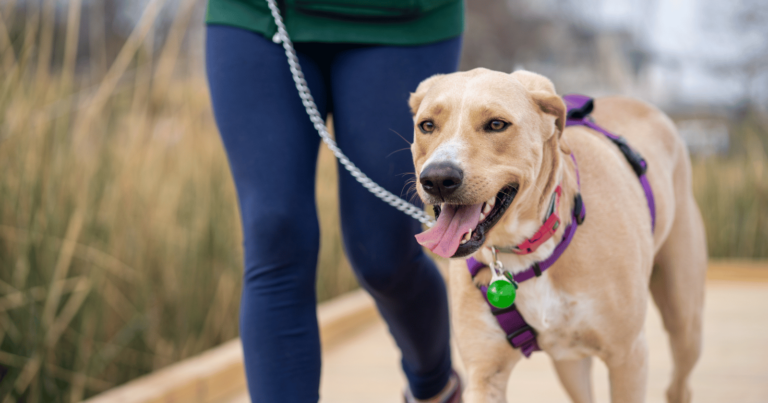Training a stubborn dog can be a real challenge.
It’s all about understanding why they’re being stubborn and finding a way to communicate with them effectively.
Training shouldn’t feel like a battle, it should be a practice of understanding and patience.
So, if you’re dealing with a dog who just won’t listen, don’t fret!
I’ve got some tried and tested tricks up my sleeve to help you out.
Let’s dive into my “10 effective tricks to train a stubborn dog who won’t listen”.
1. Consistency is key
Training a stubborn dog can sometimes feel like an uphill task.
And just like with people, dogs too have their unique personalities.
Some are more headstrong than others. But that’s not a dead end.
The secret sauce?
Consistency.
Consistency is the magic ingredient when it comes to training your stubborn furry friend.
Dogs, especially the stubborn ones, thrive on routine and predictability.
Imagine it this way.
It’s like learning a new language.
You can’t expect to be fluent after a single lesson.
It’s the daily practice and repetition that makes the difference.
Similarly, with your dog, you need to use the same commands, in the same tone, every single time.
This repetition allows your dog to understand what you are asking from them.
2. Positive reinforcement works wonders

Here’s a lesson I learned the hard way with my own stubborn little furball, Max.
Max, my adorable Labrador, was once a notorious shoe-chewer.
No footwear was safe around him.
And no matter how sternly I scolded him, it seemed like he just wouldn’t listen.
Then I tried a different approach – positive reinforcement.
Instead of scolding him when he chewed on shoes, I started rewarding him when he didn’t.
I showered him with praises and treats whenever he ignored a shoe laying around.
Guess what?
It worked like a charm!
Positive reinforcement is all about rewarding good behavior rather than punishing bad behavior.
It’s a powerful tool in our dog training arsenal.
The trick is to catch your dog doing something right and reward them immediately.
3. Catch their attention
Did you know that dogs have an attention span of only about five to ten minutes?
That’s right, your stubborn pooch isn’t just being difficult, they genuinely get distracted easily.
So before you start any training session, make sure you have your dog’s undivided attention.
Use a toy, a treat, or even a fun noise to get them focused on you.
Then keep the training sessions short and sweet.
Remember, marathon sessions are not going to help.
Instead, opt for multiple short sessions throughout the day.
4. Patience pays off
Training a stubborn dog is not a sprint, it’s a marathon.
It requires time, effort, and above all, patience.
You may have to repeat the same command hundreds of times before your dog gets it.
And that’s okay.
The important thing is not to lose your cool.
Losing your temper or resorting to punishment can backfire and make your dog even more resistant to training.
Instead, keep your training sessions positive and upbeat.
Your dog is not being stubborn just to annoy you.
They might be confused, anxious, or simply not understand what you’re asking them to do.
5. Use high-value rewards
All dogs love treats, right?
But not all treats are created equal in your dog’s eyes.
Some treats, like a piece of chicken or a favorite toy, are much more enticing than others.
These are known as high-value rewards.
They can be your secret weapon when training a stubborn dog.
Use these high-value rewards exclusively for training.
Related Stories from Black Pearl Dogs
This makes them extra special and gives your dog a strong incentive to listen to your commands.
The key is to only give these rewards when your dog successfully listens to a command.
Over time, your pup will start associating good behavior with these special treats and will be more motivated to listen to you.
6. Understand your dog’s needs

Every dog is unique, with their own quirks and personality traits.
And that’s what we love about them, isn’t it?
Just like us, they have their own needs and preferences.
And understanding these is crucial when dealing with a stubborn dog.
Maybe your dog is not being stubborn at all.
Maybe they’re scared, or anxious, or just not comfortable with the command you’re trying to teach them.
Take the time to understand your dog’s needs.
Invest in building a deep, meaningful relationship with them.
This will not only make training easier but also enrich the bond you share with your furry friend.
7. Never underestimate the power of play
I’ll be honest, there were times when I felt frustrated with my dog’s stubbornness.
But then, I discovered a game-changer – playtime.
Turning training into a fun game was a revelation.
Suddenly, my stubborn dog was eager to participate and learn new commands.
Incorporating play into training sessions can make a world of difference.
It takes the pressure off and allows your dog to learn in a relaxed, stress-free environment.
Plus, it strengthens the bond between you and your pet.
8. Sometimes, it’s okay to let them win
This might sound strange, but hear me out.
Picture this: you’re playing tug-of-war with your pooch.
You’re the human, you’re stronger, and you could easily win every time.
But should you?
Actually, letting your dog win sometimes can be great for their confidence.
It makes them feel accomplished and more motivated to engage with you in future games or training sessions.
Apply this concept to training as well.
If your dog is struggling with a particular command or trick, break it down into smaller steps.
Let them succeed at each step before moving on to the next one.
This approach boosts their confidence and makes them more receptive to learning new things.
9. Use clear, simple commands
The language barrier can be a real challenge when training a stubborn dog.
But it doesn’t have to be.
Dogs aren’t fluent in human language.
They don’t understand complex sentences or abstract concepts.
What they do understand is clear, simple commands.
Instead of saying “Stop jumping on the couch”, try a simple “Off”.
Instead of “Don’t go there”, use a straightforward “No”.
The simpler and clearer your commands, the easier it is for your dog to understand what you want from them.
10. Love and respect are the foundation
At the end of the day, the most important ingredient in training a stubborn dog is a healthy dose of love and respect.
Your dog is not just a pet, but a living being with feelings and emotions.
They deserve to be treated with kindness and understanding, even when they’re being stubborn.
Training should never involve fear or intimidation.
Instead, it should be based on mutual respect and trust.
Show your dog that you love them, that you respect them, and that you’re there to guide them.
It’s a bond like no other
The deep bond between humans and dogs is something that transcends time and culture.
It’s a relationship that’s been nurtured for thousands of years, based on mutual respect, trust, and, above all, love.
Training a stubborn dog is not just about obedience or discipline.
It’s about understanding your furry friend, nurturing their unique personality, and guiding them gently towards better behavior.
Remember, every dog has its own pace of learning.
What works for one might not work for another.
Patience, consistency, and respect are your best tools in this journey.
Training your stubborn dog is not just a responsibility.
It’s an opportunity to strengthen the bond you share with them, to understand them better, and to help them become the best they can be.













